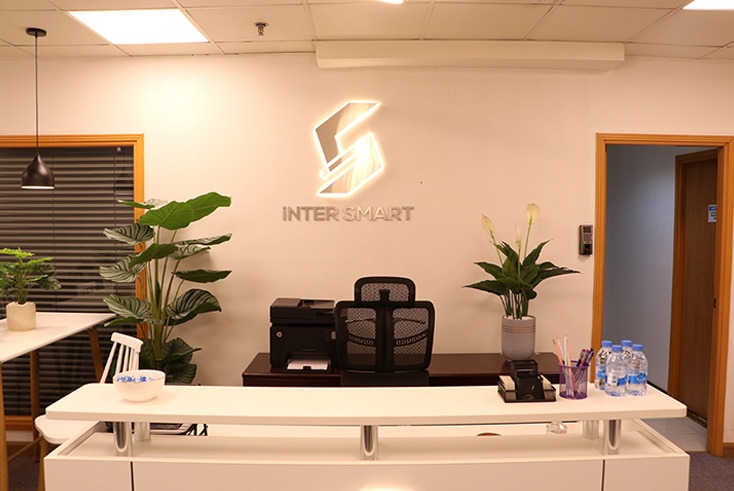Web Accessibility: Designing Inclusive and User-Friendly Websites
- Date: 24 / July / 2023
- Post By: Admin

Imagine trying to use a website but not being able to understand the contents, cannot see the pictures, or find the information you need quickly. Would you feel frustrated? Would you leave the site and jump onto the next one? Most likely, the answer is yes. Sadly, this happens to many people every day because some websites are not designed with users or ‘people-first’ in mind. They don't follow accessibility guidelines or make an effort to be inclusive, reveals our website development company experts.
So, how do we prioritize users in web design? First, we need to understand the differences and similarities between inclusive and accessible website design. In this blog ’Web Accessibility: Designing Inclusive and User-Friendly Websites’, we’ll discuss the best practices, guidelines, and tools that empower web designers to create accessible websites that foster equal access and delightful user experiences.
Understanding Web Accessibility.
The inclusive practice of designing and developing websites that can be easily understood and accessed and a smooth interaction regardless of any disabilities can be referred to as web accessibility.
It extends beyond adapting visual impairments to include a variety of disabilities such as auditory, cognitive, and motor impairments. In many nations, web accessibility is not only a moral imperative but also a legal requirement.
What are WCAG Accessibility Standards?
The World Wide Web Consortium (W3C) created the WCAG guidelines to improve website use and accessibility for people having disabilities. WCAG 2.1, first developed in 1999 as WCAG 1.0, includes four guiding principles for ADA website design: perceivable, operable, understandable, and robust.
Essential Elements of User-Centric Design and Inclusive Web Experiences
-
Semantic HTML and Structure
-
Keyboard Accessibility
-
Assistive Technologies and Accessible Rich Internet Applications
-
Color Contrast and Visual Design
-
Multimedia Accessibility
-
Forms and User Input
-
Responsive Design and Mobile Accessibility
-
User Testing and Feedback
-
Semantic HTML and Structure
Semantic HTML refers to using HTML elements that convey meaning and structure to both users and assistive technologies. When designing an inclusive website, it's important to use semantic elements like <header>, <nav>, <main>, <section>, <article>, <aside>, and <footer> to provide a clear structure to your content.
Lists should be marked with proper elements and links should have proper descriptions showing their purpose. A Properly structured HTML enhances accessibility by enabling screen readers and other assistive technologies to interpret and navigate the content accurately.
-
Keyboard Accessibility
Designing websites that can be easily navigated by a keyboard alone is a fundamental aspect of accessibility. Such keyboard designs are extremely crucial for users who depend on keyboard navigation or people with motor disabilities or somebody who are not able to use a mouse.
A designer has to ensure that all interactive elements like links, buttons and form fields are easily accessible with keyboard shortcuts. Implementing visible focus indicators to indicate which element has keyboard focus also does work.
-
Assistive Technologies and Accessible Rich Internet Applications
As you’ve already known, Individuals with disabilities rely on assistive technologies including screen readers, voice recognition software, and braille displays to access and engage with websites.
The Accessible Rich Internet Applications (ARIA) specification adds new traits and features for developers to employ in order to improve the accessibility of dynamic and interactive web content.
-
Color Contrast and Visual Design
Colour contrast is extremely critical for people who have visual impairments or colour blindness, says our web design company UAE experts.
To assess the contrast ratio between text and background colours, designers need to use tools like WebAIM Colour Contrast Checker. Also, instead of providing information simply through colour, you can also include alternate methods of transmitting meaning via icons or labels.
-
Multimedia Accessibility
When designing inclusive and user-friendly websites, it's important to consider multimedia accessibility, which means making sure that people with disabilities also have access to and understand multimedia content like images, videos, and audio in a website.
Providing alt text for images, captions for videos, and transcripts for audio helps ensure that everyone can enjoy and understand the website's content, regardless of their abilities.
Transcripts offer a text-based version of the audio content, a huge help to those who prefer reading or have auditory disabilities. Meanwhile, Audio descriptions provide additional narration to describe visual elements in videos for individuals who are visually impaired or blind. Talk to our experts at Inter Smart, the top web design company in UAE to know more.
-
Forms and User Input
It's equally important to think about forms and how users input information. This means making sure that forms are easy to understand and use, especially for people with disabilities.
Some things to consider are providing clear instructions, using clear labels, and giving helpful error messages. It's also helpful to offer different ways to input information, like speaking or using a keyboard, to make sure everyone can use the forms easily.
-
Responsive Design and Mobile Accessibility
Responsive design helps the website adjust and look good on these devices. Mobile accessibility means making sure the website is easy to use on small screens and touchscreens. And responsive designs and mobile accessibility is the best method to make sure of that.
It involves making things like buttons and text bigger and easier to tap. By considering both responsive design and mobile accessibility, websites can be enjoyable and easy to use for everyone, no matter what device they're using. Inter Smart offers the best web development services tailored to your business needs.
-
User Testing and Feedback
All these techniques and accessibility will hit the right target with the proper and valuable insights of Individuals who have disabilities. So, you need to start user testing with the help of actual people who can give honest feedback and review on accessibility.
Make sure to encourage them to report any accessibility barriers they are facing and make necessary improvements based on their feedback. You can also consider involving accessibility experts or consultants to perform these audits and provide feedback for improvement.
In conclusion, designing inclusive and user-friendly websites requires prioritizing web accessibility. By considering multimedia accessibility, forms and user input, responsive design, and mobile accessibility, we can create websites that are accessible and welcoming to all users.
Recent Blogs
Tired of being associated with unprofessional and inexperienced companies? Well then, you have good reason to be here. As one of the top most web designing companies in UAE
- DESIGN
- DEVELOP
- DELIVER
